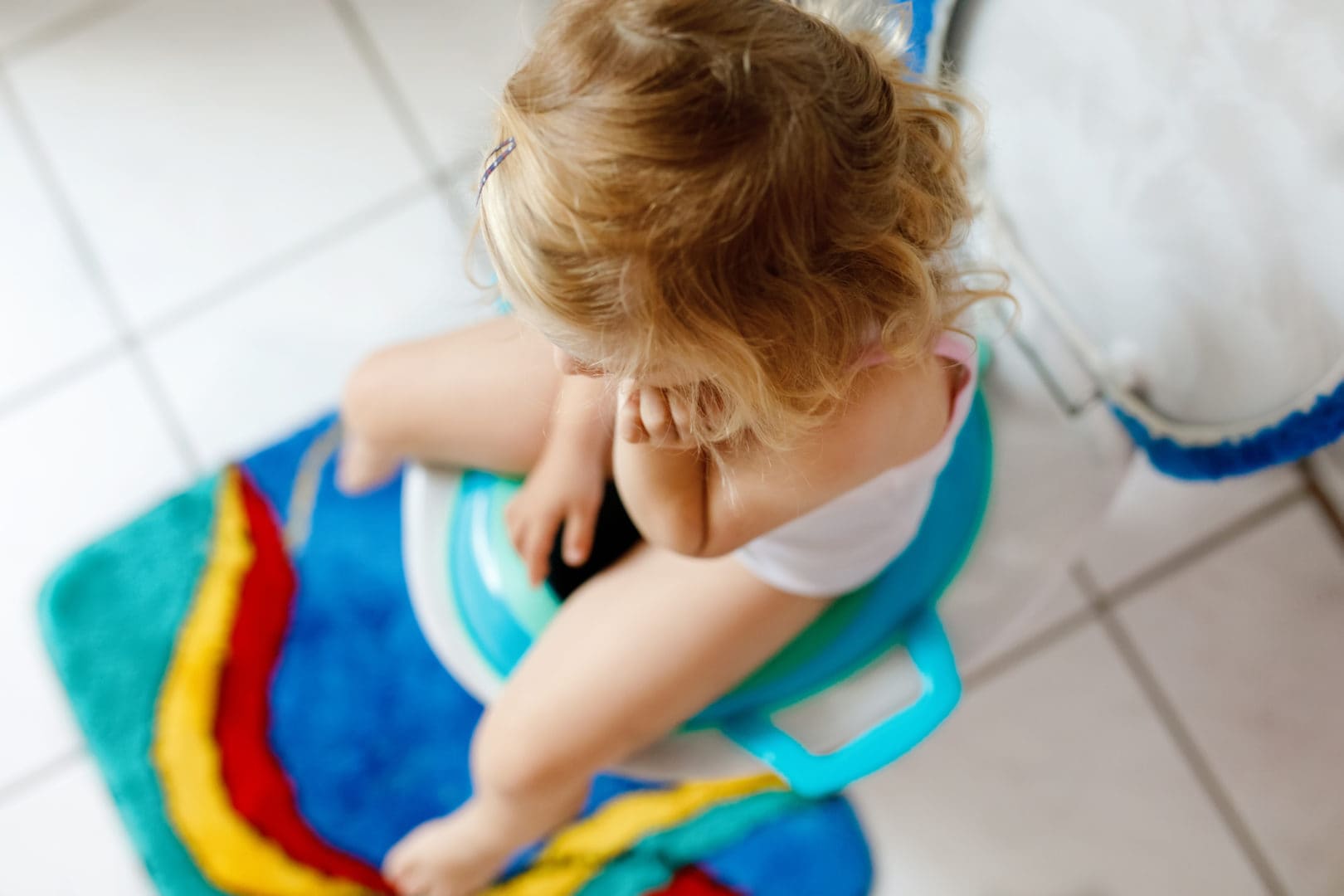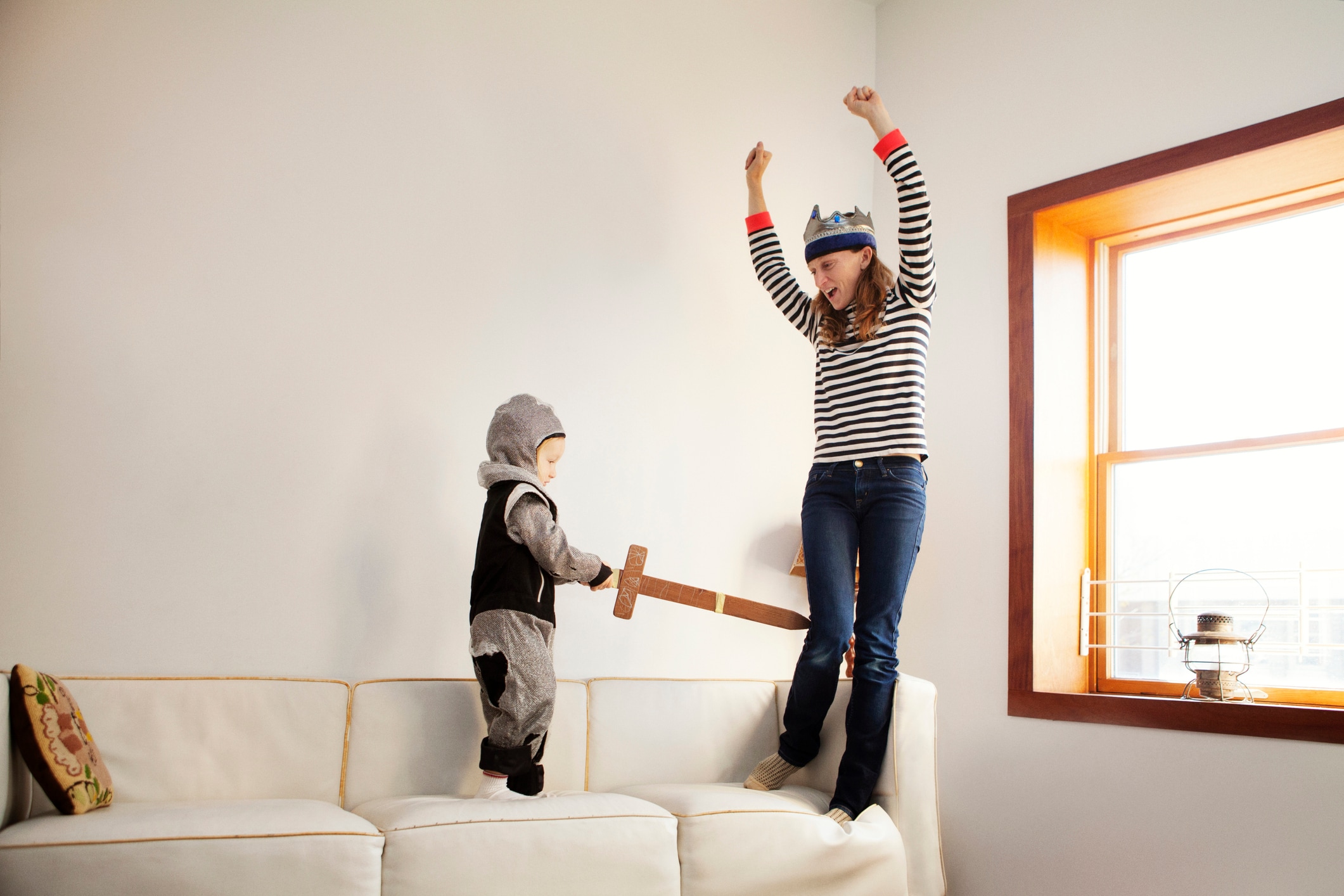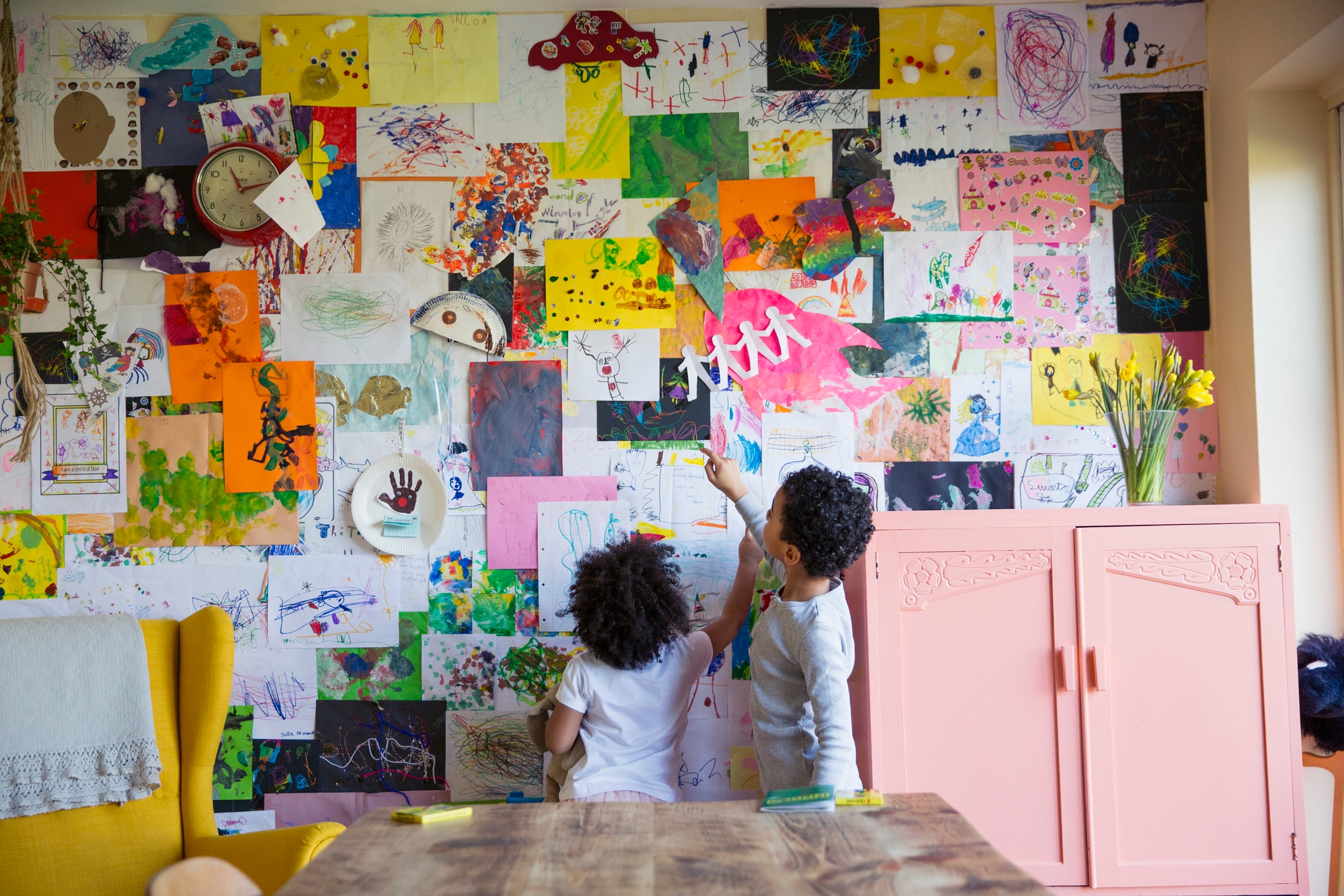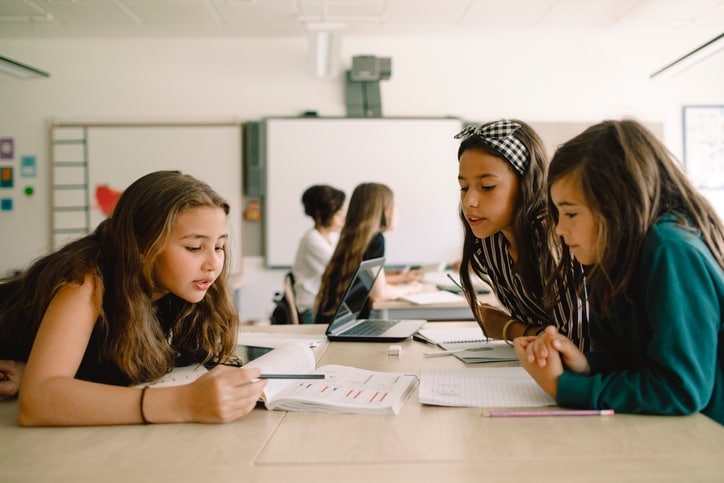In this article
Potty training is as much a developmental milestone as it is a cultural one. A number of social opportunities, namely the ability to start preschool, are tied to a child’s potty training journey. However, getting children to that point can feel overwhelming and downright confusing. This is especially true when it’s your first child or when a child has developmental or neurological differences. Depending on the approach, the process can create unnecessary stress and frustration for everyone involved.
“Parents really put a lot of pressure on themselves (and sometimes their child) around the issue of potty training, but it’s important to remember that potty training is more closely related to a child’s physical and neurological maturity than to a child’s intellect,” says Dr. Michelle Bennett, a pediatrician with Elliston Pediatrics. “The age of readiness for potty training varies quite a lot from child to child, and despite what many parents think, I promise that the age a child potty trains isn’t a predictor for whether that child will eventually go to Harvard or score 1500 on the SAT.”
If you’re ready to start the potty training transition, it’s helpful to recognize the signs of readiness, learn about the most succcessful potty training methods and understand how developmental factors can shape the experience. Read on to learn about these and more.
When to start potty training
Research — and our experts — suggest that potty training typically occurs between the ages of 18 months and 3.5 years; however, various developmental factors also shape the best time to start.
“Age 2-3 is the normal range,” says Brittany Sheehan, a pediatric sleep and potty training consultant and the founder of Brittany Sheehan Sleep. “There is some data to support that kids between ages 30-35 months will take the shortest amount of time overall to train. Boys typically start the process a bit later and take a bit longer to learn.”
The experts we spoke to also note that starting later is often better for neurodivergent kids, as this allows for the development of the child’s gross motor and communication skills. “Children with gross motor delays or sensory issues tend to be later with potty training and will need extra patience and support in the process,” Bennett explains. “For those children, it’s generally better to wait until the child is on the older side to allow more time for neurological maturity and to help decrease the time and effort required on all sides.”
Sheehan notes that there are many behaviors that adults assume indicate potty training readiness but actually don’t, including:
- Telling you they want to go on the potty.
- Going and sitting on the potty.
- Saying potty-related words.
- Having dry diapers during sleep.
Additionally, just because other kids of similar ages are potty training, it doesn’t necessarily mean every child will be ready at the same time. Sheehan and Bennett offer the following list of helpful signs that a child truly is ready to start potty training.
Signs of potty training readiness
- The child goes longer between diaper changes.
- The child starts to request or indicate that they need a diaper change.
- The child begins to recognize when they’re getting ready to pee or poop (such as squatting or going to a particular corner).
- The child becomes more communicative in general about their wants and needs.
- The child understands how to follow simple directions.
- The child is able to pull their pants up and down.
- The child can climb on and off a potty seat.
- The child can communicate their needs.
Read more:
5 popular potty training methods
1. The three-step method
Sheehan says families generally succeed most with a three-step method. This method involves throwing out all the diapers on day one and starting toilet training immediately. Kids go about normal activities sans diapers or pull-ups, and caregivers ask kids frequently if they need to use the restroom.
“The reason it works so well is that it’s very black and white. It’s much easier for them to process, ‘I no longer wear diapers during the day, full stop.’”
—Brittany Sheehan, pediatric sleep and potty training consultant
Often, experts and parents begin this method with the child first running around the house with no bottoms on, then wearing a long shirt or loose pants with no underwear as they learn their body cues. Finally, as they start to grasp the process, they move on to wearing big kid underwear. Hence, the three steps: naked, commando, underwear.
The process can take anywhere between three and four days up to three weeks. Many parents and caregivers opt to do it over a weekend. Children are still offered a diaper or pull-up at bedtime, Sheehan notes. “The reason it works so well is that it’s very black and white,” Sheehan adds. “It’s much easier for them to process, ‘I no longer wear diapers during the day, full stop.’”
Pros
- It’s fast.
- It’s effective.
- Having a clear plan can help reduce stress for kids.
Cons
- There will be accidents and messes.
- It may limit what activities you can participate in during training.
- It may not be the best method for kids who need more time.
2. Parent-led potty training
During parent-led potty training, parents guide the process by encouraging toilet use at specific times or intervals during the day.
An example is the Azrin and Foxx Method, which encourages potty training through repetition. This interactive and intensive method includes modeling toilet use with a doll, having the child mimic the same process and then providing reinforcement to encourage desired behaviors. There are also resources to support parents in using this place for individuals with developmental disabilities.
Parent-led potty training is recommended when children are 20 months or older and have met certain developmental milestones, such as:
- Sitting up by themselves.
- Walking.
- Staying dry for a couple of hours at a time.
- Imitating.
- Recognizing a full bladder.
Pros:
- Parents maintain some control over the process.
- Can be tailored to meet different children’s needs and learning style.
- Has adapted resources for individuals with developmental disabilities.
Cons:
- May not be successful if started too early.
- May not align with each child’s developmental needs.
- Requires specific materials.
- Is very structured and may not be a fit for those who prioritize children’s autonomy.
3. Child-centered potty training
This involves putting a child’s potty training chair in the bathroom for the child to explore, reading books about how to use the potty and offering frequent suggestions and encouragement for using the potty, but never pushing or forcing.
Sheehan notes that there are two primary schools of thought when it comes to potty training: the three-step method or this one, which she describes as “a gradual wait-and-see method, where parents encourage their kids to try sitting on the potty if they want but diapers are still used.” Though it works for some kids, she adds, the lack of clarity for kids can make it a nebulous, drawn-out process.
Cons:
- May be slower than other methods.
- Can be confusing for some kids.
Pros:
- Less energy-intensive for parents and caregivers.
- Can be less stressful for certain kids.
- May be a good fit for gentle and positive parenting styles.
4. Elimination Communication
When using elimination communication, caregivers closely observe babies — as early as between birth and age 4 months — and begin to recognize the subtle signs that the child is peeing or pooping. As soon as they observe these signs, they make a consistent, audible sound (a whistle, hissing, grunting, etc.) and immediately hold the child over a bowl or toilet.
The goal of elimination communication is that it’s done so consistently that eventually, the parent or caregiver starts to recognize the signs and predict when babies will need to go to the bathroom. At the same time, the baby learns to recognize the sound and associate it with the impulse to use the bathroom.
Cons:
- Requires intensive caregiver observation and action.
- Typically begins before kids developmentally recognize the urge to urinate.
- Not common in the United States, so resources may be harder to find.
- Rarely recommended by experts. Sheehan notes that she doesn’t use it in her practice.
Pros:
- Parents and caregivers can start early.
- May help kids gain the ability to communicate about needing to use the restroom.
- Can make the transition to toileting seem more natural.
- Doesn’t require diapers or pull-ups.
5. The “Oh, Crap!” method
This method, popularized by the book “Oh Crap! Potty Training” by Jamie Glowacki, encourages parents and children to start potty training by learning the behaviors, patterns and body processes involved when using the potty. This allows the parent to start recognizing the signs their child exhibits right before going potty — such as squirming, becoming still, staring off, etc. — and helps the child clearly see and recognize when they pee and poop.
Typically, this involves switching immediately to underwear (or going commando), like in the three-step method. Then, kids progress through a series of blocks — or potty training milestones — as outlined in the book until they are toilet trained. At the end, they should be able to communicate when they need to go and take action (i.e., head to the potty!).
Pros:
- Children learn quickly.
- Widely practiced and has easy-to-find resources.
- May help teach body awareness.
Cons:
- Can require a lot of time and attention.
- Accidents and messes are frequent in the early stages.
“The method itself is less important than the timing and nuance of communication. Even the ‘best’ method will be a disaster if the child is too young or if a lot of pressure is put on the child.”
—Brittany Sheehan,
How to choose the right potty training method
The experts we spoke to agree that it’s essential to do what works best for each individual child, rather than committing to any specific potty training method. “The method itself is less important than the timing and nuance of communication,” Sheehan says. “Even the ‘best’ method will be a disaster if the child is too young or if a lot of pressure is put on the child.”
Even seemingly positive pressure — like ‘potty parties,’ rewards and excessive praise — can make the process more difficult. “This can really overwhelm kids, even if it comes from a good place,” Sheehan explains.
Potty training techniques to avoid
Regardless of which potty training method you choose, experts warn that physical force or coercion will slow the process. “The foundation for all potty training methods is positivity,” says Bennett. “There should never be any punishment or anger involved in potty training. Parents should remember that children rarely want to pee on themselves. Children almost always want to please their parents, even if the process is challenging for them.”
Sheehan says to avoid the following unhelpful and outdated potty training techniques:
- Starting too early or too late.
- Trying to force nighttime potty training before kids are ready.
- Forcing toddlers to “try” to use the toilet, even if they don’t need to.
- Not allowing kids to get up from the toilet until they’ve gone to the bathroom.
- Switching back-and-forth between diapers and pull-ups.
- Skipping or rushing through phases.
- Using bribes, threats and punishments.
Helpful tips to boost potty training success
In addition to finding the toilet training technique that works best for you, here are some other smart potty training tips from the experts to make the process easier.
Model proper toilet training
Bennett notes that potty training starts with small steps, like placing your child on the potty with clothes on and exposing them to potty-related books and videos. “It’s also important for parents to model toileting for children as they approach potty training age, so the parent should begin taking the child into the bathroom with them regularly.”
Stock up on potty training supplies
Bennett suggests purchasing the following items to help with the potty training process:
- A portable, child-sized potty seat that can be placed on an adult toilet.
- A self-contained travel potty for the car.
- Plenty of small rewards for the child.
Potty training pro tip: Bennett says placing a Post-it note over the automatic toilet sensor in public restrooms can help alleviate fears of the unexpected (and loud) automatic toilet flush.
Know that potty training success may not transfer to bedtime
“There’s no such thing as nighttime potty training. A child staying dry through the night is 100% a function of their neurological maturity and not something they can control,” says Bennett.
Forcing a child to sleep without a diaper or pull-up won’t make nighttime training happen more quickly. “Overnight diapers should be used until the child is naturally staying dry on their own at night, which commonly takes until ages 6-7, and sometimes even later,” Bennett explains.
Remember: Consistency Is Key
“Most of the families who come to me with major issues are struggling with one or both of these things: either they started way too early or way too late, or the parents are putting a tremendous amount of pressure on the child,” Sheehan says.
Pressure can backfire, she says, as can relying on rewards, punishments or bribes, and constantly switching between pull-ups and no pull-ups. They key to successful potty training is to introduce the concept clearly, outline a strategy and then stick to it so you don’t create any confusion for the child.
Read more:
The bottom line
Potty training is a significant and occasionally stressful milestone. It requires not only finding a great potty training method, but also practicing patience, positivity and tuning in to each individual child’s strengths and struggles.
There are several approaches, but the best potty training technique is the one that prioritizes your child’s and family’s needs. “Regardless of the official method used, it’s equally important that the timing is right and that parents have a good strategy for communicating with the child,” says Sheehan.
When done right, potty training can help build trust, communication and increase your child’s understanding of their body.





